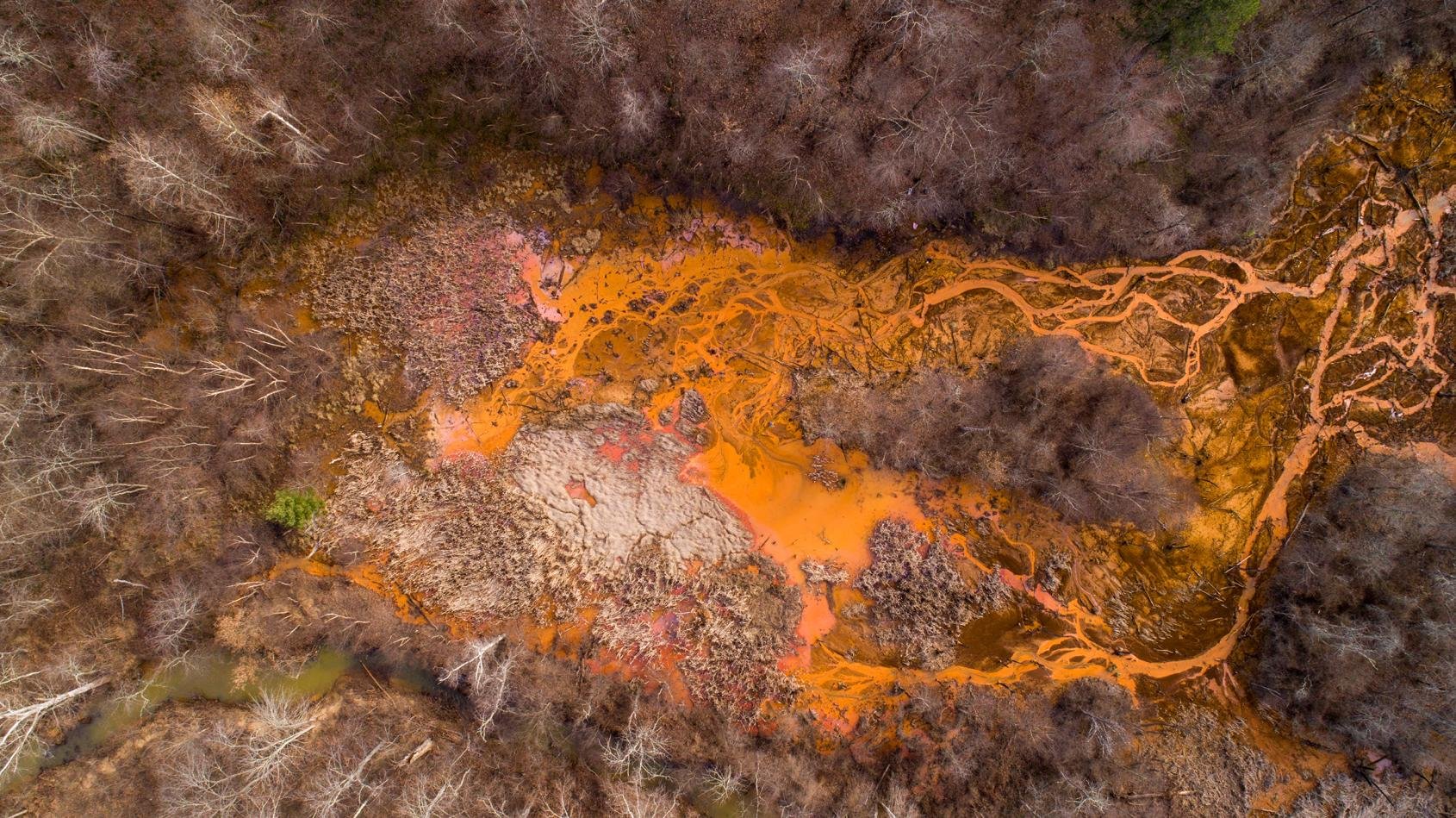Connor and I were scrolling through YouTube a few weeks ago and we had Business Insider videos auto playing while we cooked and ate dinner. There were many highlighting the world’s most expensive art materials, where they come and how they’re made. This video popped up- How to Make Paint from Pollution, it perked up my ears because of the mention of acid rock drainage (ARD).
ARD is the release of acidic water from mining operations, which can pollute waterways and harm local ecosystems. When rocks containing sulphide minerals are blasted and exposed to oxygen, the result is high levels of sulphuric acid leaching into groundwater, rivers and lakes. The pH levels of the drainage are affected and can vary depending on many factors, such as exposure to fresh water or other neutralizing compounds. But, in those cases, the neutralization of the drainage can make the soluble iron(III) ions precipitate as iron(III) hydroxide, a yellow, sometimes more orange solid frequently referred to as Yellow Boy. This presence of this colour in waterways has historically been linked to horse deaths, the disappearance of vegetation and dead aquatic life- but ARD is not a historical issue, it’s ongoing.
Aerial view of the acid mine drainage near Oreton, Ohio in 2018. Ben Siegel—Ohio University
The video follows a group called True Pigments out of Sunday Creek in Appalachian Ohio, who utilize water treatment facilities to purify and extract the iron-oxide pigments from the contaminated water flowing out of abandoned coal mines. This effort contributes to Sunday Creek in many ways; restoring clean water, replenishing the local economy with more employment opportunities, expanding the local tax base, and taking pollution and transforming it into a sustainable and profitable product in the form of artist-grade paint.
Image Courtesy of True Pigments
These are available to buy near me, so I’d like to add them to my palette. There’s something morbid about painting with pollution, but I suppose that morbid sentiment can be applied to many other colours. Cadmium is absolutely a contender for the world’s most harmful pigment, but at least in this case the sourcing is a positive act.
There are a handful of ARD sites in Canada such as Britannia Beach in British Columbia and the Proto Mine Tailing site near Elliot Lake in Ontario. University of British Columbia engineers have been working on a large-scale treatment plan for Britannia Beach since 2006 including a water treatment plant and the installation of a concrete plug to halt any other continued flow into the creek. The plant processes an average of 4.2 billion liters of run-off annually, removing an average of 226,000 kilograms of heavy metal contaminants. I’m not sure what they do with their yellow boy sludge, but I kind of want to get my hands on some. Who do I need to call?
While I was taking the EESC_O course I visited the professor during office hours and we spent some time taking about how art and science often overlap. Science and art go hand-in-hand when it comes down to the raw materials, and they also relate in truth-seeking.
If you would like to support True Pigments you can donate or purchase the Reclaimed Earth paints here.

